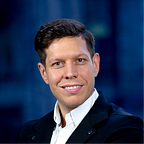How to Recruit The Best Software Developer?
ITCraftship was established in May 2017. During this year and a half, we managed to find the best developers for 13 companies. It may not seem like a big number, but if you’ve ever looked for a software developer, then you probably know, why this process is longer than recruitment processes for other positions and how hard it can sometimes get.
We wanted to share with you our experience and give our clients a better understanding of our process. We decided that it would be best to show it in the form of a case study, on the basis of our last recruitment, during which we recruited 2 amazing developers out of 88 candidates in a month. We hope our process will help your company to make your recruitment process simpler and more efficient!
To learn more about our developer recruitment process read a Case Study where we share how we delivered a highly-skilled Senior Back End Developer to a Teal organization.
STEP 1 — PASSIVE SOURCING
While we are looking for developers to recruit, we start with passive sourcing. First, we write job ads in Polish and English. We prepare a short version of the ad for social media and a long version with all the necessary details for job boards.
These are the ads we used during our last recruitment process for Senior Ionic Developer position:
STEP 2. ACTIVE SOURCING
No matter how great your job ad is, the best results still come with active sourcing. It also requires a lot of time and money commitment. For this type of search, we engage our Virtual Assistant. She has access to my LinkedIn account because we use LinkedIn Sales Navigator for active sourcing. In our opinion, it’s a much better tool than LinkedIn Recruiter. We prepare instructions for her in the form of a document as well as a video just to make sure that everything is clear.
Part of the VA instruction with requirements
Our Virtual Assistant’s job is to source and connect with the candidates on our behalf. She also receives message templates from us — first-touch, immediately after connecting, and some follow-up messages if they’re necessary (if we don’t get any answer from the developer).
See how in our message templates we show care about the needs of the developers we’re connecting with — not our needs as a recruitment company. Who cares how many positions you need to fill? No-one, that’s why immediately you must show interest in a candidate's profile and justify why you reached out to them in the first place.
STEP 3. INTRO CALL
If they are willing to have a call with me, my VA sends them a link to a video that I have recorded. In this video, I give a little bit of introduction about the company and position I’m recruiting for, so when I have a call with the candidate, he/she already has a bit of a background about their possible future employers and can prepare for the next step with any questions they might have. This helps us make the most out of our 15 minutes together. The short call is also meant to check the English skills of the candidate — since they are to work remotely, their communication skills are one of the most important aspects.
STEP 4. TECHNICAL SCREENING
If we have no problems with communication, we send them a link to a test in Devskiller. We use this tool for technical screening because it allows us to prepare our own test, limit the time to solve the challenges and enable us to rate skill levels, so we can later show results to our clients transparently and conveniently. It is significant for us that the test can be completed in a time of 3–5 hours and that it checks only the skills which are necessary for the job. We try to respect developers’ time by not asking them to complete a 40-hour game-building task.
STEP 5. SECOND CALL
If the candidate completes the test with a satisfying result, we invite him/her to have a second call with us. During that call, we review Devskiler results, but also we try to get to know something about the candidate, assess culture fit and the abilities to work remotely. We ask them questions like “Please tell me your story as a developer and the most interesting project you have worked on” or “How do you want to arrange your work environment (special room, co-working space, etc.)?” We stick with our interview scripts, so we have a good benchmark when comparing candidates on less quantifiable metrics as well.
STEP 6. INTRODUCTION
After two calls and a tech screening, we choose the best of the best and present the summary of their profiles to our client. Our client decides which candidates they want to talk to, so we introduce them to each other and leave the decision about hiring the right fit.
To keep track of all of the candidates (which can get quite tricky; during our last process we had 88 candidates in our pipeline at the beginning of the process), we’re using CRMs. Many companies prefer to use an ATS, but testing out a few so far, we realized that a CRM provides us with better tools. We used Streak for quite some time, but right now we decided to try out Pipedrive. It’s a great tool, and we highly recommend using it to anyone who has ever forgotten about a call, meeting or replying to an email. We also rely on Calendly and Zoom when it comes to scheduling and having calls.
We hope that this post will help you shorten your recruitment process. Or if you think that it’s way over your head, we can help you with that! Contact us and we will help you hire better developers faster and more predictably or visit our blog with high-quality content!
